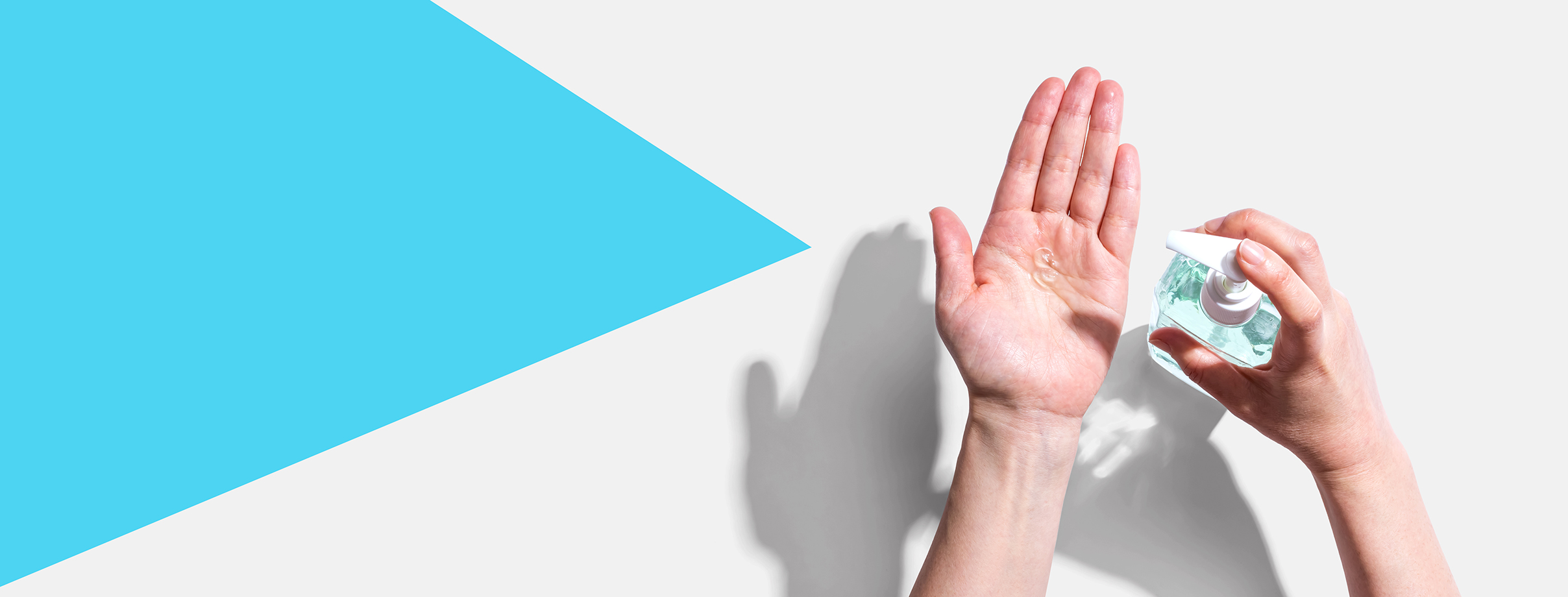Spoil Your Skin: Upgrade Your Hand Care Routine
.jpg)
Washing your hands is important regularly, but right now it’s especially important. Unfortunately frequent sanitizing and cleaning can strip skin of it’s natural oils and cause hands to become cracked, dry and sore. While these side effects are uncomfortable enough on their own, did you know dryness and irritation can actually increase your risk of infection? Germs and bacteria are more easily able to penetrate broken skin, and moreover, dry hands feel tight and painful. Luckily, there are some secrets to spoiling and quenching thirsty skin. Here are the top 5 ways to heal and prevent dry hands!
- Grab a Good Sanitizer: Don’t despair if soap and water isn’t available; alcohol-based hand sanitizers kill the microbes on the skin and can be used often while on the go. Good examples of this are upon entering and exiting buildings, especially if the sanitizer is provided or when touching door handles. We love products that restore hydration while they sanitize, like this amazing new sanitizer created by Dr. Jane’s brother, Dr. Keith Burk. Kalaya Hand Sanitizer is specially formulated to destroy germs and bacteria while providing hyaluronic acid to plump and nourish dry skin.

- Choose Soaps Carefully: Avoid anything overly scented. Stick with a mild, fragrance-free soap and apply just enough to create a light lather. While you may be inclined to purchase antibacterial soaps, this may actually be doing more harm than good. A gentle soap paired with the proper handwashing procedure is sufficient in removing bacteria, germs and debris. It would be better to get soaps that have good skin-healthy ingredients. Use lukewarm water, not hot, to avoid stripping your natural oils.
- Pat, Don't Rub: Instead of rubbing your hands with a clean cloth or paper towel, pat them. This prevents unnecessary irritation and helps leave a little residual moisture, which can then be locked in with an excellent hydrator or moisturizer.

- Slather After You Lather: Elevate your skin health by using rich creams as opposed to thinner, water-based lotions, especially creams containing ceramides - healthy lipids found naturally in your skin. Over time, age and sun exposure can reduce or even deplete your natural ceramides, which makes supporting your skin with well formulated creams and hydrators especially important. Other beneficial ingredients for dry, cracking skin include colloidal oatmeal and shea butter, which will help lock in moisture. It’s best to avoid any creams with irritants like fragrance, retinols, anti-aging serums or allergens. We love ZO Hydrating Creme, which temporarily relieves symptoms of extremely dry, itchy skin while supporting the skin barrier and function. In fact, it has been recognized and promoted by the National Eczema Association. It includes the amazing colloidal oatmeal and shea butter. ZO Skin Health also makes an incredible Recovery Creme, containing the dry skin saviour, ceramides as well as ultra-hydrating squalane and shea butter to create a barrier to protect against moisture loss. aspireMD has a special code so you can have ZO dropship your order directly to you! Send us an email at info@aspiremd.ca or DM us on social media for details. If you’re looking for a wonderful drug store alternative, La Roche Posay, specifically Lipikar, has a range specifically formulated for dry skin. The Lipikar Baume contains plenty of lipid-replenishing ingredients and includes shea butter and niacinamide. Apply your rich moisturizer immediately after washing to really seal in that moisture and encourage the healing process to rebuild that skin barrier.
- Night Time is the Best Time: Pack on the moisture at night! The best time to really apply those thick, rich creams is at bedtime. Adding a layer of Vaseline or Aquaphor overtop can help if you have severe dryness and cracking and is still known as one of the most effective ointments. We recommend putting a pair of cotton gloves over your hands to aid in absorption, to prevent staining your sheets and pillow cases, and to protect your face from the overly emollient creams.
It’s always easier to prevent than to treat dry skin after the fact, but if you are already experiencing broken skin be sure to cover the area before going out or running necessary errands. Conceal easy entry points like cracks or cuts with a bandaid or wear a pair of gloves to shield your skin from bacteria. Once fully healed, don’t discontinue the moisturizing - keep it up! Nourish and love the skin you’re in!



